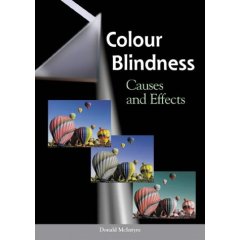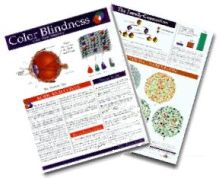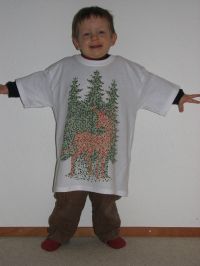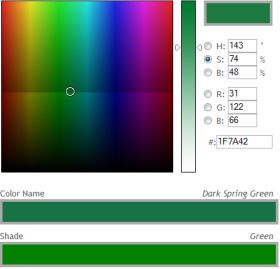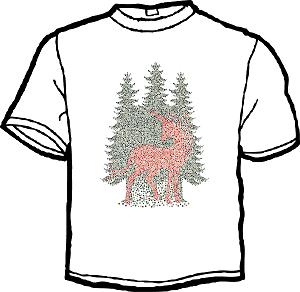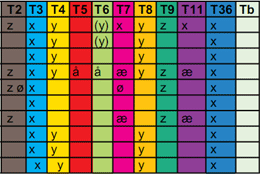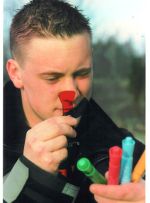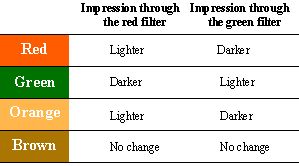It is quite well known that a lot of police officer applicants are disqualified by their color blindness. But what about if you would like to become a firefighter and you have a color vision deficiency? Do the same rules apply?
I’ll share my thoughts with you after the following personal story I received by a reader of Colblindor.
I’ll give you a bit of history on myself. I have recently taken schooling to become a firefighter, and seem to have run into a wall due to a color deficiency which I have. Funny things is I went to an ophthalmologist about 2 years ago and was cleared for the D-15 test with 0 errors.
But the next time I took it I convinced myself that it was suppose start with blue and end in green as the doctor did not say it was to fade into red. For some reason thats what I thought it was the last time I took, while I was doing it though I knew it was incorrect. When the doctor pulled it from me obviously it was horribly wrong. So he sent me for further testing during which i did D-100 plus lantern. The D-100 I used one eye at a time and it was difficult. End result I have been diagnosed with severe color blindness. And yet I can do the D-15 online with 0 errors and the confusion test with decent results as well as 1 wrong in ten.
Wondering where you might recommend getting some solid answers as there seems to be a lot of ignorance in the medical field and the fire department. I went through fire school with no problem, as well as the rest of the courses I took with no problems what so ever, and now they tell me that my colorblindness is a hazard. Anyway, right now I am quite frustrated and looking for answers as this is what I want to do—yet I feel that I being discriminated based on ignorance of color blindness.
Now this sounds pretty unfair. You accomplish everything just perfectly and only your color blindness should disqualify you to become a firefighter?
Has color any importance for firefighters?
As you know every fire has its color or better said consists of a whole range of colors. The colors not only tell us something about the burning substance but also are very closely related to the heat of a fire. For example a red fire can have a temperature between 977°F (525 °C) with a just visible red and 1830 °F (1000 °C), a cherry, clear red.
Also smoke has a color which can tell you a lot about the elements making up the smoke you see. And as any smoke can be very heavily toxic it is important to be able to distinguish different shades of color. At different stages of a fire the smoke color changes and therefore it is important for a firefighter to be able to interpret colors appropriately.
This are only two reasons why good color vision can help you to be a professional firefighter.
How firefighter applicants are tested for color blindness.
Often a standard test will be used to test if you have good color vision or not. Some type of Ishihara plates are very well known and often used. But you could also come across any type of arrangement test or a simple lantern test.
If you look at the following recruitment information of three different Fire and Rescue Services, you will see that it is very common to ask for good color vision. But the rules for color blindness can differ between the recruitment centers.
- Hampshire Fire and Rescue Service
The minimum standard accepted by HFRS is the Farnsworth D-15 standard test.
- Shropshire Fire and Rescue Service
You must have an appropriate level of colour perception, if you are found to be colour blind, we will send you for more tests to determine if you can work safely in a safety critical environment.
- Devon and Somerset Fire and Rescue Service
Potential firefighters are subject to certain entry requirements specified by law. Applicants should be aged 18 and over; have good eyesight, not suffer from colour blindness.
NFPA: color vision deficiency doesn’t disqualify you
In the latest edition of the Standard on Comprehensive Occupational Medical Program for Fire Departments (2007 Edition) published by the National Fire Protection Association the rules concerning color blindness have changed. The following Report on Proposals makes it clear, that a color vision deficiency doesn’t disqualify you anymore from being a firefighter.
Formerly, color vision deficiency was listed as a Category B* medical condition. However, it is felt that within most cases this condition will not affect the ability of a member to safely perform the essential functions of his or her job. The fire service physician should consider the color vision deficiency of the individual and consider the color vision requirements of the member’s job and reach an individual determination.
*Category B: A medical condition that, based on its severity or degree, could preclude a person from performing as a member in training or emergency operation environment by presenting a significant risk to the safety and health of the person or others.
How to apply as colorblind firefighter
First of all you shouldn’t just forget about becoming a firefighter just because you have any kind of color blindness. As written above there are many different rules used and views are changing for the benefit of colorblind applicants.
So if you apply just be honest and tell them the truth about your vision. It won’t help you if you try to hide it or cheat on certain tests, because most often it will strike back and you will be looked at as an unreliable person. I would tell them about your color vision deficiency from the first moment on.
Then you can take the test and see what happens. If you pass, that’s perfect. And if you fail and they won’t let you go one step further just because of your color blindness, you should ask for precise explanations and try to describe them, how you see the world and how this could handicap your work as a firefighter.
Of course it could help you if you tell them about the most recent NFPA Report 1582 (see above) and their changed view on color blindness.
Maybe discussing color blindness at FirefighterNation.com, or other places, could also help to get the topic of color vision deficiency more recognized at recruitment offices, which will help all colorblind colleagues which would like to become a firefighter.
Fire! Picture taken by Wili Hybrid.
